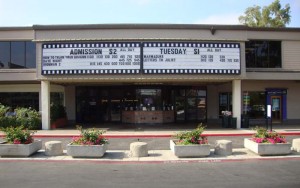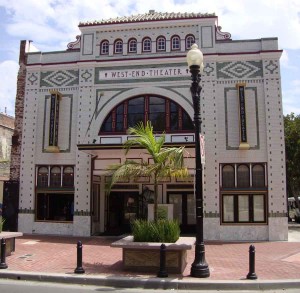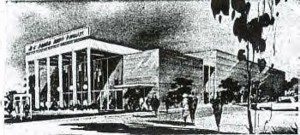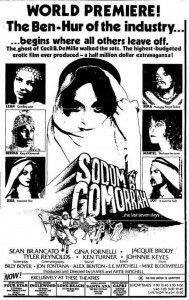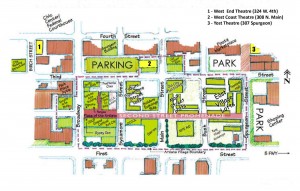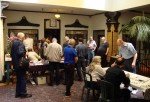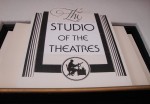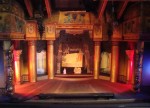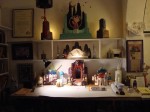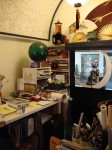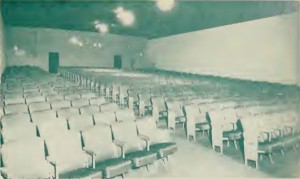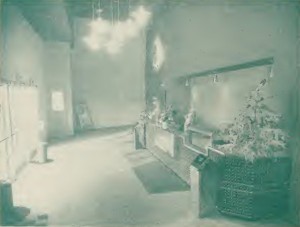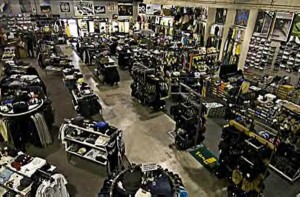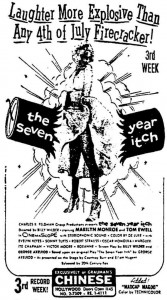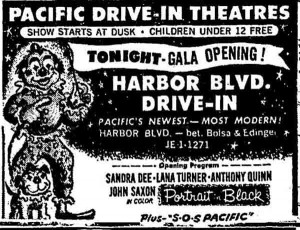Tags: Comments Off on News of Failure & Success On The County Cinema Scene
News of Failure & Success On The County Cinema Scene
July 22nd, 2010 by
Respond
The West End Theatre at 95
July 20th, 2010 by
Respond
This week marks the 95th anniversary of Santa Ana’s West End Theatre. In addition to being Orange County’s second oldest remaining theatre structure (the Yost being the oldest), the West End was the first county venue built expressly for use as a cinema. Prior to the West End’s construction, Orange County cinema venues were comprised of live theaters, which double as movie houses (such as the Yost), and converted retail establishments.
Over it’s long and diverse history, the West End Theatre passed through a “who’s who” of early Orange County cinema operators, was renamed four times, and remodeled three times. Originally one of the county’s top draws for first run Hollywood fair, the theatre transitioned in to art house booking for a time, before finishing out it’s final years as a highly controversial adult cinema. Caught in the middle of Santa Ana’s high profile 1970’s pornography crackdown and urban renewal efforts, the West End (then known as the Guild) was closed in 1978.
While standing beside an area that was ravaged by civic redevelopment over the ensuing decades, the West End managed to survive the wrecking ball. Today, the theatre is outwardly restored to it’s look of 1915, serving as home to a couple of small retail stores and maintaining some interest for potential use as a cinema once again.
Tags: Comments Off on The West End Theatre at 95
UA Santa Ana: From Pride to Scorn
July 15th, 2010 by
Respond
Tags: 1 Comment
Downtown Santa Ana
July 12th, 2010 by
Respond
Tags: Comments Off on Downtown Santa Ana
Studio of the Theatres Open House
July 11th, 2010 by
Respond
Tags: 1 Comment
White Elephants & Disposable Cinemas
July 8th, 2010 by
Respond
Theatre structures have regularly posed a dilemma for property owners. While serving as potentially lucrative tenants and offering up considerable consumer drawing power, there is often a problematic issue once a theatre has run it’s coarse as a viable business. After movie goers have moved on, the property owner is left with a “white elephant”; a building which, by it’s very design, is both difficult to rent/sell and expensive to maintain.
Beginning in the late 1950’s, this problem became particularly palpable, as residential populations shifted towards outlying suburban communities, leaving behind the formerly thriving cinemas of urban downtown’s. A trend later exacerbated with the arrival of multiplexes and “modern” cinemas. In an attempt to circumvent the “white elephant” issue, the 60’s and 70’s saw an increase in theatres being designed as temporary configurations, which could be converted to alternative uses with a minimum of effort.
One Orange County example of these “disposable” theatres can be found in Buena Park. Today, the modest cinder block building ,standing at 7886 Beach Blvd, serves as the home for a popular skateboarding retail outlet. However, back in 1959, the structure opened as the “functionally modern” Electrovision Corp. Buena Park Theatre.
In stark contrast to the cavernous auditoriums and ornate designs of other county cinemas, the Buena Park was purposely designed “on the cheap”, with cinema specific features that could easily be altered or removed. Built for $75,000, the theatre featured a false auditorium floor (which could be removed to reveal a conventional level slab) and non load bearing internal framework (allowing the floor plan to be reconfigured readily). Even the venue’s box office, concession, and projection areas were designed for seamless removal; utilizing a minimalist approach for each. While serving up an under whelming moving going experience, the approach was unquestionably cost effective and, some forty years later, allowed for the theatre to live on as the Identity Boardshop.
The movement towards “disposable” theatres never caught on as an industry standard. While AMC utilized the idea heavily during their early 70’s national expansion (even going as far as to include ground floor projection booths in many locations), the concept transitioned more in to tighter design budgets, than truly temporary cinemas. At most, the “white elephant” issue may carry some of the blame for a generation of generic shoebox multiplexes, which plagued much of the cinema landscape throughout the 70’s and 80’s.
In an interesting bit of cyclical history, the present day exhibition industry is beginning to face the “white elephant” issue once again, as a generation of expensive, 20 – 30 screen, megaplexes become increasingly obsolete. Thus far, the reaction has been to build slightly smaller venues. However, one has to suspect it’s only a matter of time before someone revisits the idea of “disposable” theatres.
Tags: Comments Off on White Elephants & Disposable Cinemas
Happy 4th of July
July 4th, 2010 by
Respond
Tags: Comments Off on Happy 4th of July
Joseph Musil Jr. Passes
July 1st, 2010 by
Respond
Tags: 2 Comments
A Mirrored Beginning and Ending
June 27th, 2010 by
Respond
Tags: Comments Off on A Mirrored Beginning and Ending
Forgotten Cinema: The Niguel Theatre
June 26th, 2010 by
Respond
Tags: 2 Comments

